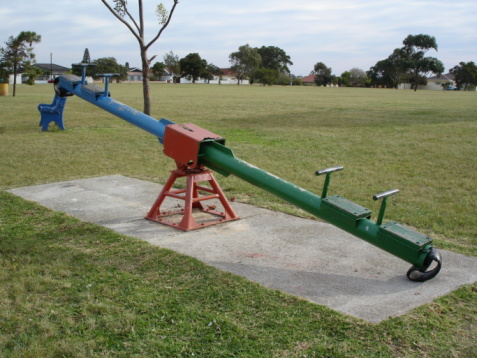In this article, we will discuss the torque examples and other aspects of them.
- Opening a bottle
- Turning a steering wheel
- See-saw
- Automobiles engine
- Wrenches
- Gyroscopes
- A pendulum or a parachute is applying torque when swinging
- A person riding a bicycle
- Opening of door
Opening a bottle
The power necessary to open/close a bottle or similar vessel with a screwed top is known as torsion, torque pressure, or opening/closing force.
The top must be able to close the container tightly enough to prevent the contents from spilling out, but it should also be simple to open. The key to ensuring the integrity of tops and seals is to accurately replicate their releasing motion or movements and evaluate the torque forces required.

The capping torque meter is utilized as a torque management instrument on the finished item once tension limits have been specified. If torque monitoring instruments show that the topping equipment is out of tolerance, it must be corrected.
An automated torque measurement equipment is the best option for many regular tests that need accurate repeatability, human independence, and unique test protocols.
Turning a steering wheel
The impact of motor loading on the steering, which causes the driver to experience abrupt jerks on the steering while traveling, is known as steering wheel torque. The rear tires are coupled to a driving mechanism that allows operators to manoeuvre their cars.

The pressure on the navigation wheel is the consequence of the road interaction forces implemented toon the tires, as well as the dynamical configuration of the steering mechanism, and it is mainly directly proportionate to the car’s lateral acceleration, and it is conveyed proportionally to the steering axle with negligible deformations at reduced steering vantage points.
Steering wheel torque is the result of this transferred force, which is mostly attributable to engine torque on the steering, notably in front-wheel-drive cars.
See-saw
The general architecture of a seesaw, particularly the reality that it rests on the floor, ensures that the platform can never spin completely 360 degrees; however, the surface can revolve within very restricted constraints.
Imagine the clockwise rotating behaviour of a seesaw from the front, with a toddler on the left and an adolescent on the right, to demonstrate the consequences of torque.

The torque on either side must be adjusted in order for the two to be precisely balanced. Shifting mass is one option, but a movement and, as a result, this included is a more likely solution. Because the adolescent weighs precisely twice as much as the kid, the child’s this included must be precisely double as lengthy as the adolescents.
Automobiles engine
The flywheel of an engine produces torque, which is a spinning force. The higher an engine’s capacity to accomplish work, the more torque it produces. The testing is similar to work but differs somewhat. Torque is measured in pound-feet and newton meters because it is a vector (operating in one direction).
In this situation, the difference is static torque, which is the sort used to compress head bolts with a screwdriver. Static torque is generally measured in foot-pounds to prevent misunderstanding. SI, on the other hand, uses newton meters to calculate both fixed and kinetic torque.
Wrenches
A pressure wrench is a tool for tightening nuts and screws to a certain torque level. This tool enables screws to be adjusted at the correct tension, preventing harm from overtightening or parts from breaking apart due to under-tightening.
A pressure wrench is required if you want to undertake any serious repair on the motor or other mechanical parts. For example, overtightening fuel tank screws can quickly result in costly breakage and disastrous fluid loss. Catalytic plenum screws that are too tight might lead the plenum to break.
Torque standards are so important to effective automobile repair that many trade guides contain them in the back-page tables with bolt position, identification, and specific specifications, in addition to the maintenance instructions.
Projector or flexion, dial indication, button, and computerized torque wrenches are the four most common varieties, each with somewhat unique functioning concepts. The laser and scale indicators both have a basic mechanical mechanism that links to a marker that floats beyond a torque meter linked to the grip or dial indication.
The meter or dial shows the quantity of torque corresponding to the flexion of the wrench’s bent grip when pressure is imparted to it. When operating in dark all the regions, you’ll want a big pointer or meter panel if you’re purchasing a beam- or keypad kind.
Gyroscopes
A gyroscope is made up of a flywheel, which is a wheel-like disc attached to an axle, which is positioned on a bigger ring perpendicular to the wheel’s axis. The architectural solidity of the gyroscope is provided by an exterior circle in the same plane as the spinning, and the gyroscope can have multiple such concentric rings.
The spinning and axle, on the other hand, are the center of attention. The axle’s one end is usually linked to something external, whereas the opposite end is allowed to drift. Gravity has a propensity to pull the detached end of the axle lower once the flywheel starts spinning, turning it on an axis orthogonal to the flywheel’s.
The gyro may topple over as a result, but instead, it starts spinning a third axis, a horizontal axis orthogonal to both the axis of the flywheel and the direction of gravitation. As a consequence, it spins on three axes and stays extremely stable—that is, impervious to outside efforts to alter its equilibrium.
A pendulum or a parachute is applying torque when swinging
Observe the pendulum’s torque. The portion of the pendulum bob’s mass that operates throughout the curve size is the pressure that provides the restorative torque. The torque is equal to the length of the string L multiplied by the portion of the net force parallel to the arc’s radius. The torque works in the opposite direction of the angular shift, as indicated by the negative sign.
π=-L(mgsinθ)
A person riding a bicycle
While riding a bike, the peak torque that an individual can generate is roughly equivalent to 1/3 of his body weight magnified by the size of the pedal linking rod; however, if a person stays on a seat, he has three points of help and thus the torque that he may generate is roughly equivalent to 1/3 of his body weight magnified by the size of the pedal linking rod.
The highest moment that an individual can generate by transporting its center of mass as close to the pedal’s vertical plane would be approximately 1/2 of its weight increased by the size of the pedal linking rod, according to basic math.
Opening of door
Torque is intuitively understood by everyone who has actually opened a door. While opening a door, the individual pushes on the side of the door that is furthest from the joints. It takes a lot more power to push on the part nearest to the joints.
Even though the labour is the same in both circumstances (the bigger force is delivered over a shorter radius), people like to use less force, which is why the door handle is usually located in the middle.
Frequently asked questions| FAQs
Ques. What is torque and what are some examples?
Ans. Torque is a winding force that enables anything to revolve around an axis or another point in general. Torque is defined as the force that causes a wheel to revolve around an axle.
Torque is defined as the rotating force of an engine in basic words. It varies from horsepower in that torque relates to how much work an engine can do, whereas horsepower refers to how quickly that work can be done.
Ques. What is static torque?
Ans. The term “static torque” refers to a torque that does not create an angular acceleration. Since the door does not rotate on its joints regardless the force provided, someone pushing on it applies a static torque to it.
Dynamic torque is carried by the drive shaft of a racing vehicle speeding from the beginning line since it must produce an angular acceleration of the tires provided that the car is moving along the course.
The vocabulary used to describe torque can be a bit perplexing. Engineers frequently use the terms moment and moment of force identically. The instant arm refers to the radius at which the pressure operates.
Ques. When it comes to torque, what is the distinction between static and kinetic torque?
Ans. Static torque is provided manually and is done slowly. A powered tool is used to provide variable torque at a high rate of velocity.
Also Read:
- How to find direction of torque
- Direction of torque
- How to calculate torque from rpm
- Zero torque
- How to increase torque
- Constant torque
- Negative torque
I am Sakshi Sharma, I have completed my post-graduation in applied physics. I like to explore in different areas and article writing is one of them. In my articles, I try to present physics in most understanding manner for the readers.